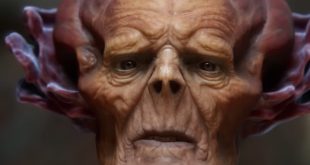Double Fine’s Broken Age may have resurrected mainstream interest in point-and-click adventures in recent years, but a number of indie advocates had been working behind the scenes to keep the genre alive long before it returned to the front of the industry.
Among them is German studio King Art, which found universal acclaim in 2009 with traditional point-and-click title The Book of Unwritten Tales. A spin-off, The Critter Chronicles, followed in 2012, before King Art decided to launch a brand new franchise – and, with it, overhaul its tech.
“The first game we did in Unity, a crime adventure called The Raven, was a very big and ambitious project for the engine for the time,” recalls creative director Jan Theysen.
“We had quite a few problems related to the project size, and the animation system back then was a nightmare. We had to come up with our own solutions for many problems – and then our solutions became obsolete because of Unity enhancements.”
After a brief foray into the strategy genre with Battle Worlds: Kronos, King Art returned to the series that had made its fame, bringing The Book of Unwritten Tales 2 to market last year.
“The Book of Unwritten Tales 2 used tech from The Raven, but added tons of new stuff, especially in the animation field after the introduction of Mechanim,” Theysen reveals.
“When it comes to tech and workflows we try to reuse as much as possible. But when it comes to the look and feel of a title, unit or character design, game mechanics, story and things like that, every game is unique. If something works great for multiple titles we might reuse it but, in general, we start with a blank page and try to figure out what might work best for a particular game.”
"Releasing on ten platforms wouldn’t have been possible five years ago."
Jan Theysen
This year sees the debut of yet another new project from King Art: crowdfunded tactical RPG The Dwarves. Though it’s another distinctive genre shift, the studio will once again be building on top of its existing technical foundation.
“The Dwarves uses The Book of Unwritten Tales 2 tech and, again, we added new features and improved on old ones,” Theysen observes. “This incremental enhancement of our technology and tools has and will be key for our games.”
Like its tools, King Art’s working methods have also been developed over the creation of each game.
“For The Dwarves we’re using a physics-based shading workflow for the first time,” Theysen details. “We’re using Substance Designer and Substance Painter, together with our established zBrush/Maya pipeline. For our game logic we use kAPE, a proprietary state-chart engine we developed originally for the first Book of Unwritten Tales, ten years ago, and kept improving ever since.
“We also use some other tools; for example, animations export from Maya. All animation events, like sounds, attachments/detachments, cameras, effects and so on, can be created by the animators. They are then imported into Unity. Without doing anything in Unity all the events are in place, which is a huge time saver.”
Alongside its increasing technical ability, King Art’s ambitions for its titles have also grown. Starting on PC, the developer subsequently expanded to console. It’s also made the leap to mobile.
“We released The Book of Unwritten Tales 2 on ten platforms,” Theysen says. “That wouldn’t have been possible only five years ago.
“The fact that three people were able to port the game from PC to nine other platforms in about five months speaks for the multi-platform capabilities of Unity. In fact, for many projects, things like controls, UI, the user experience on all the platforms and so on will be a bigger cause for headaches than the tech side.”
With The Dwarves still in the midst of development, King Art is still learning – but Theysen is keen to see what the studio picks up for its next venture.
“I love to see how fast technology is evolving and be part of that,” he enthuses. “It’s an exciting, slightly scary and often surprising time to be a game developer.”

 MCV/DEVELOP News, events, research and jobs from the games industry
MCV/DEVELOP News, events, research and jobs from the games industry



